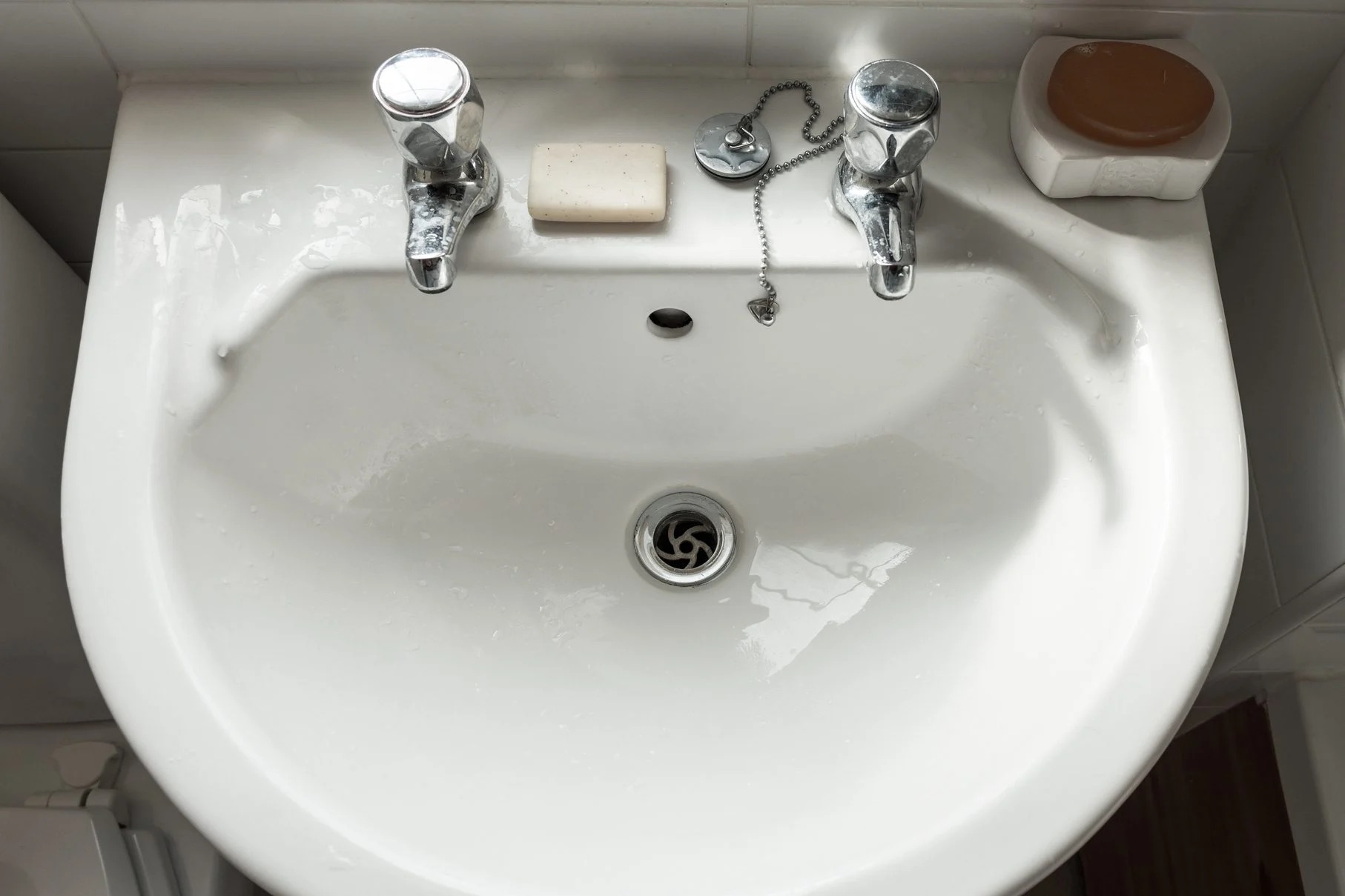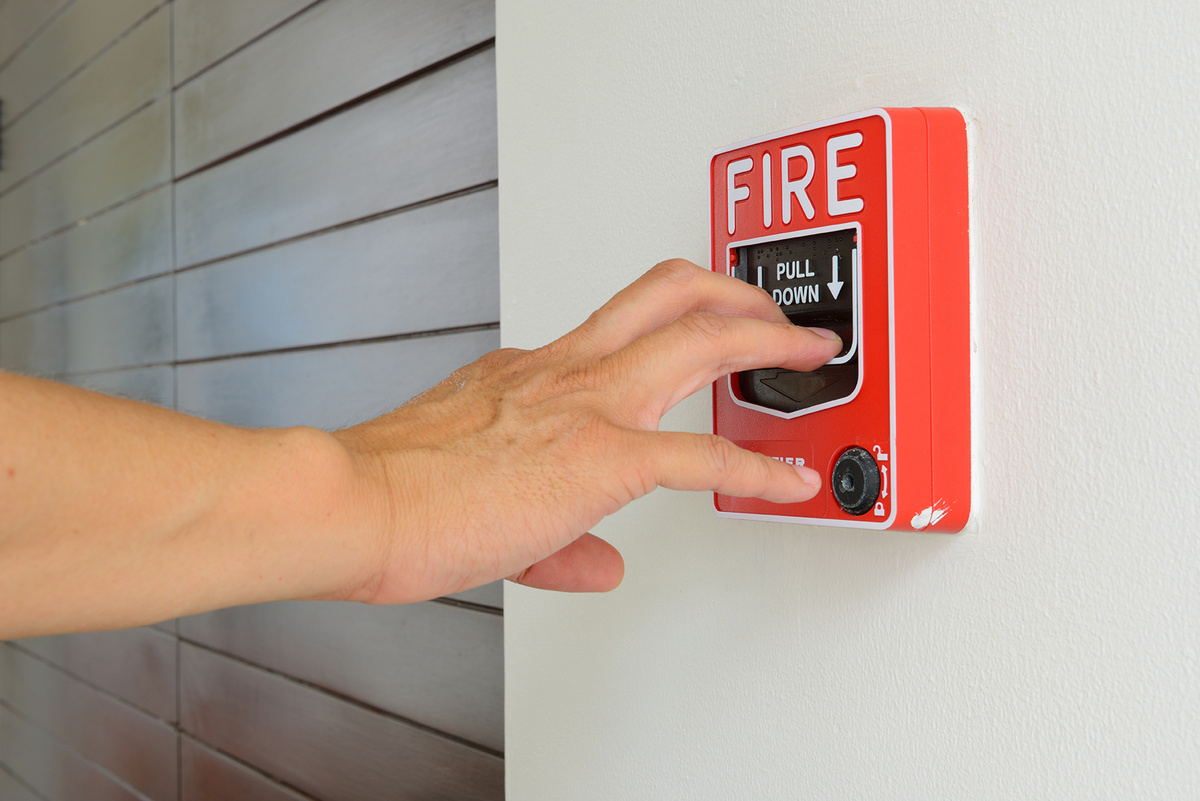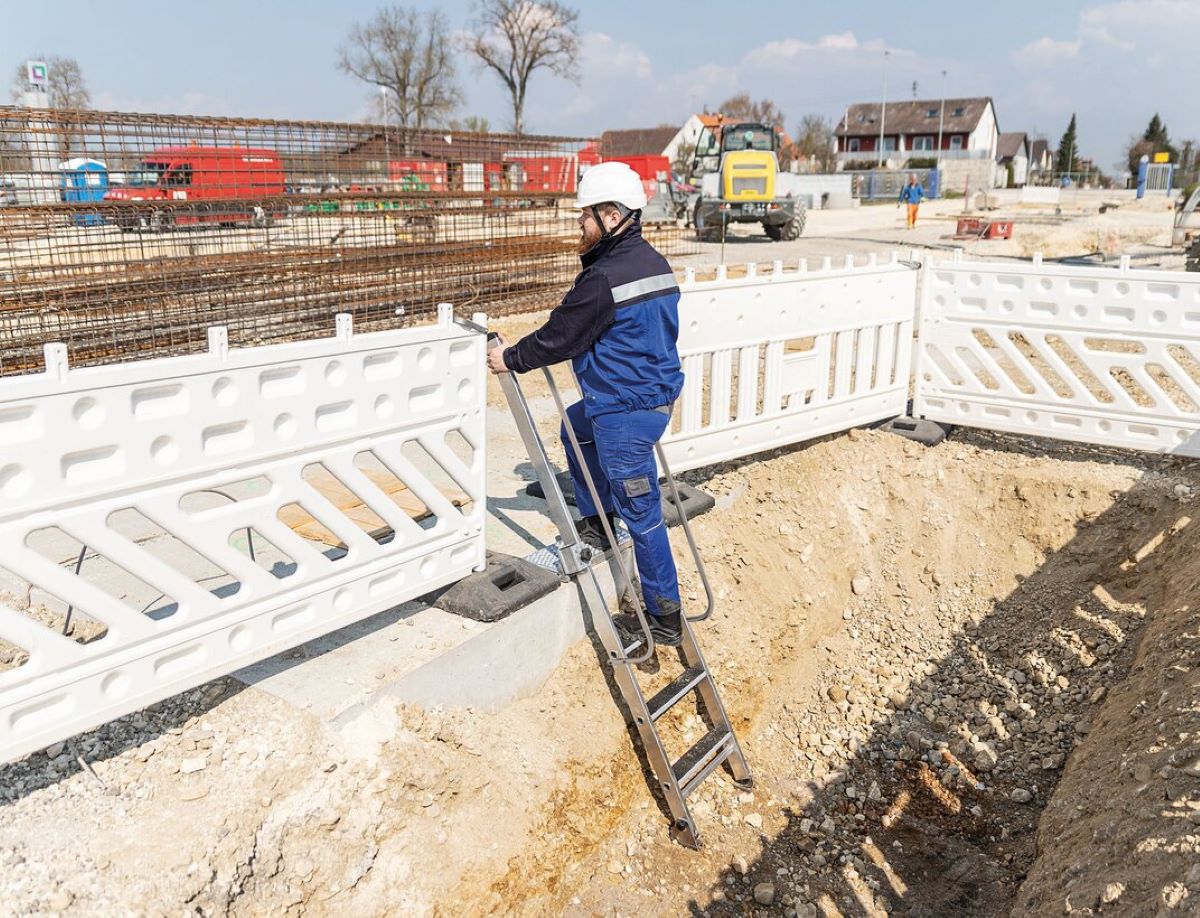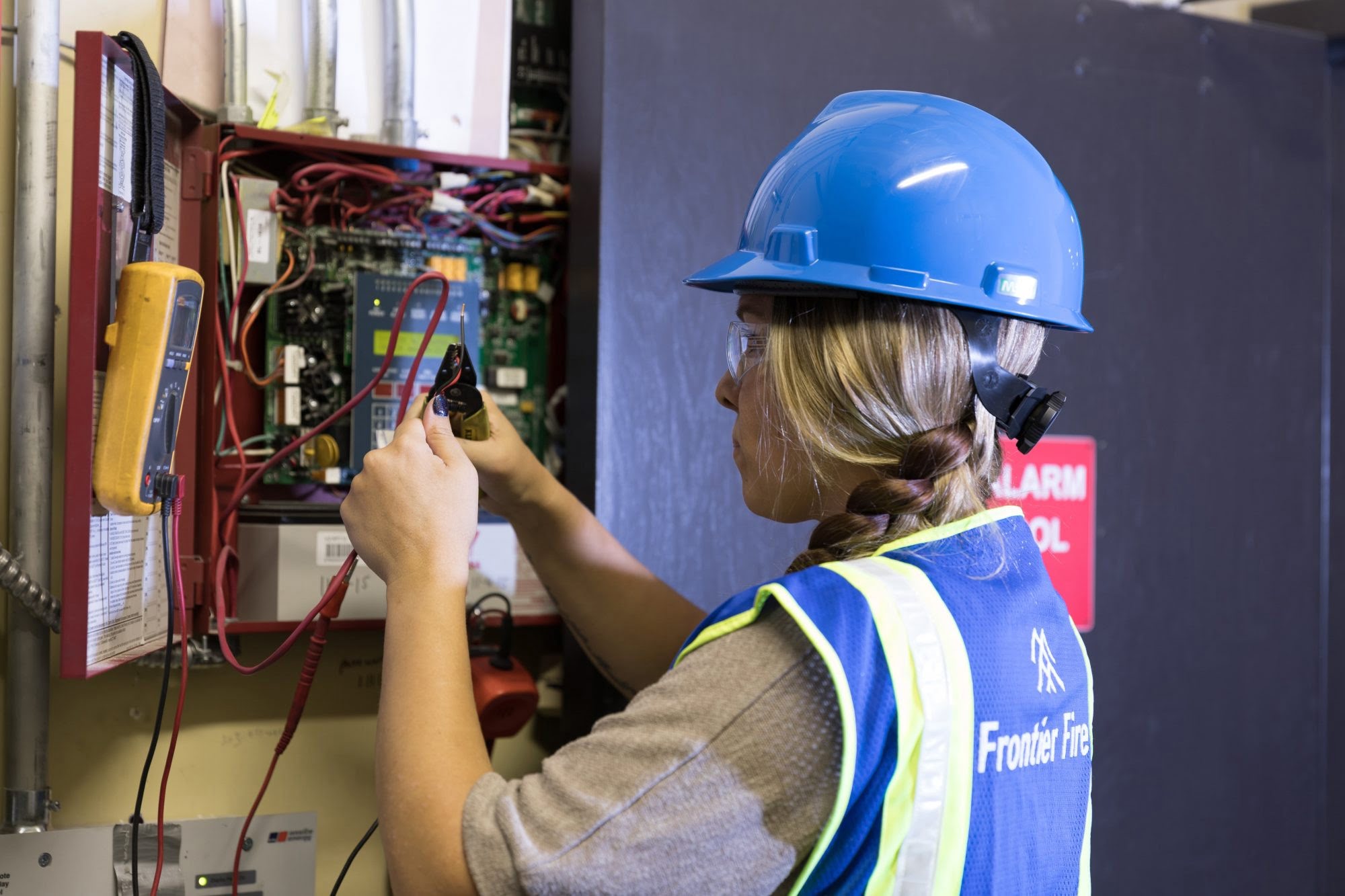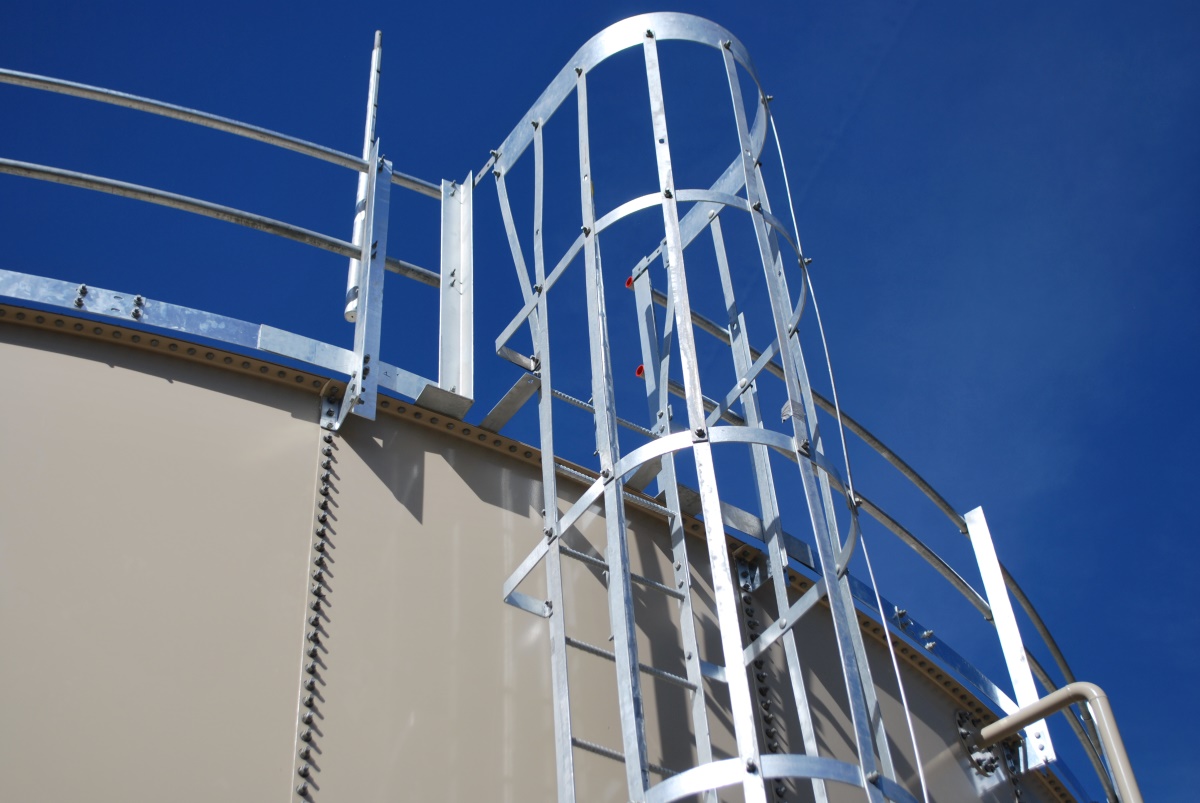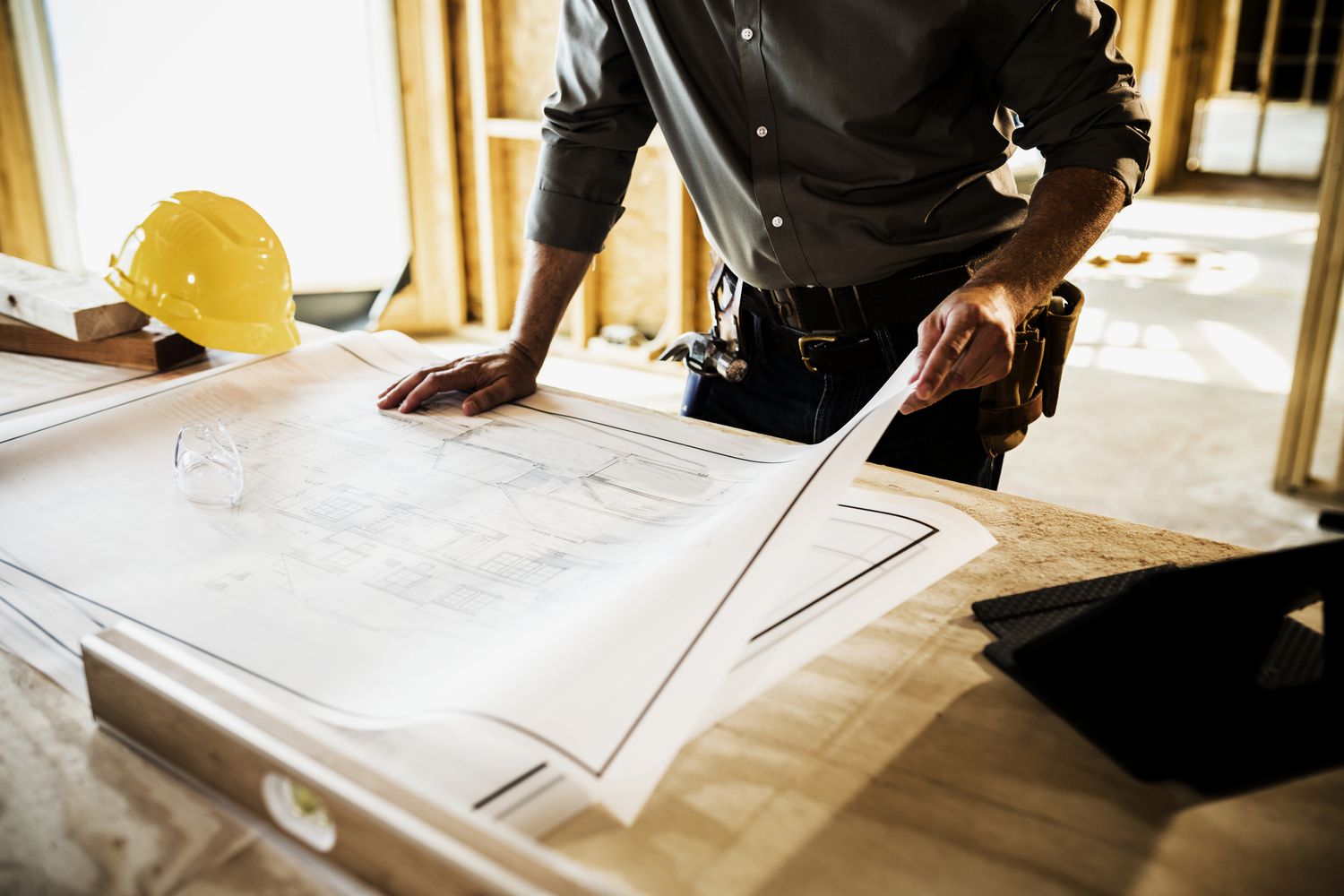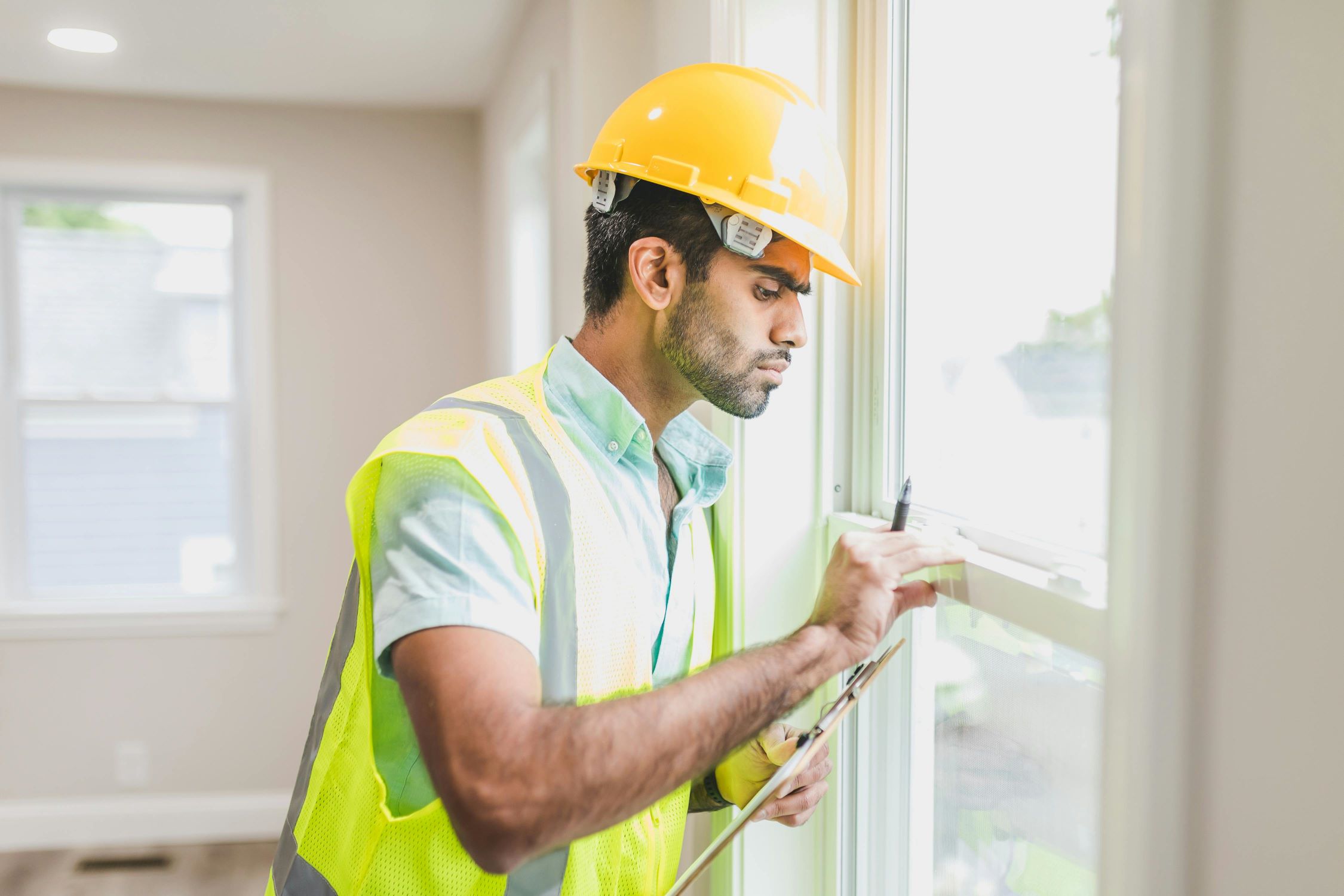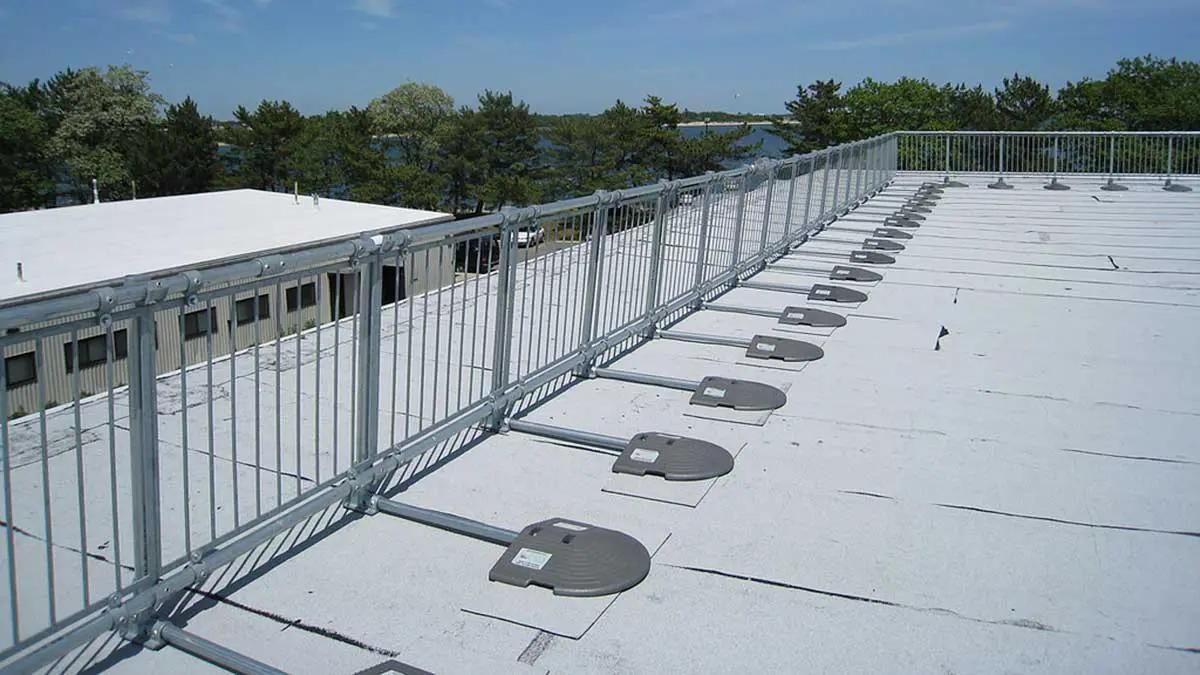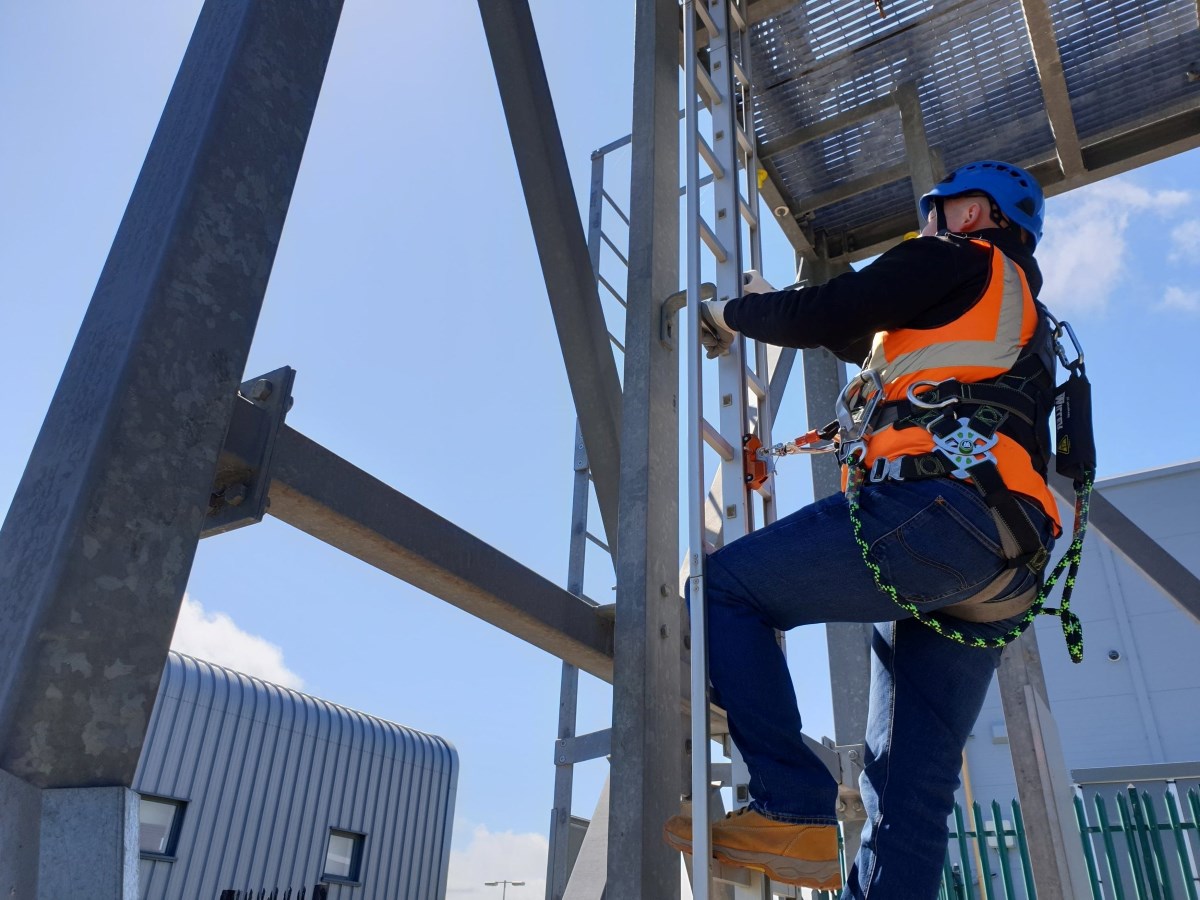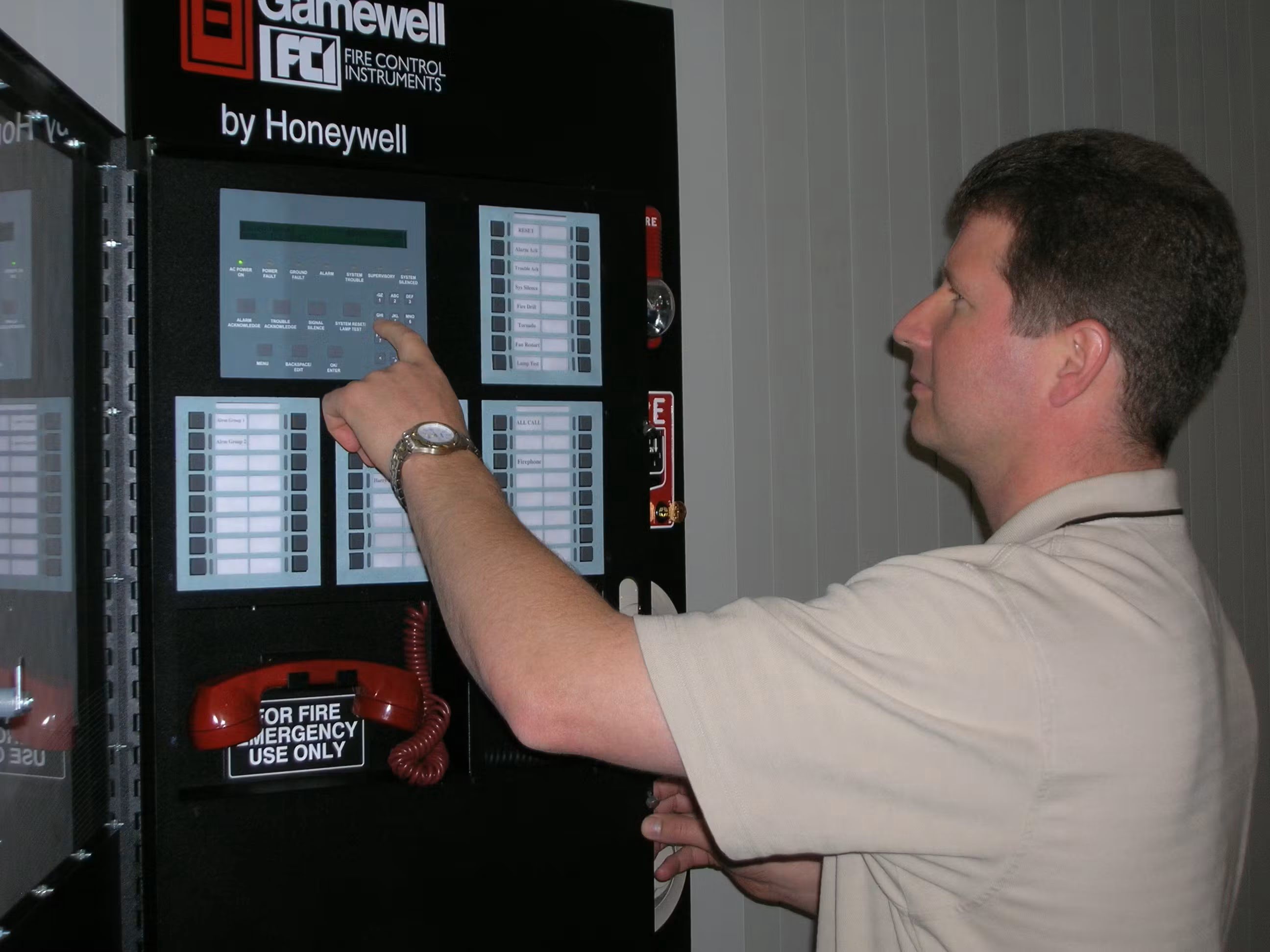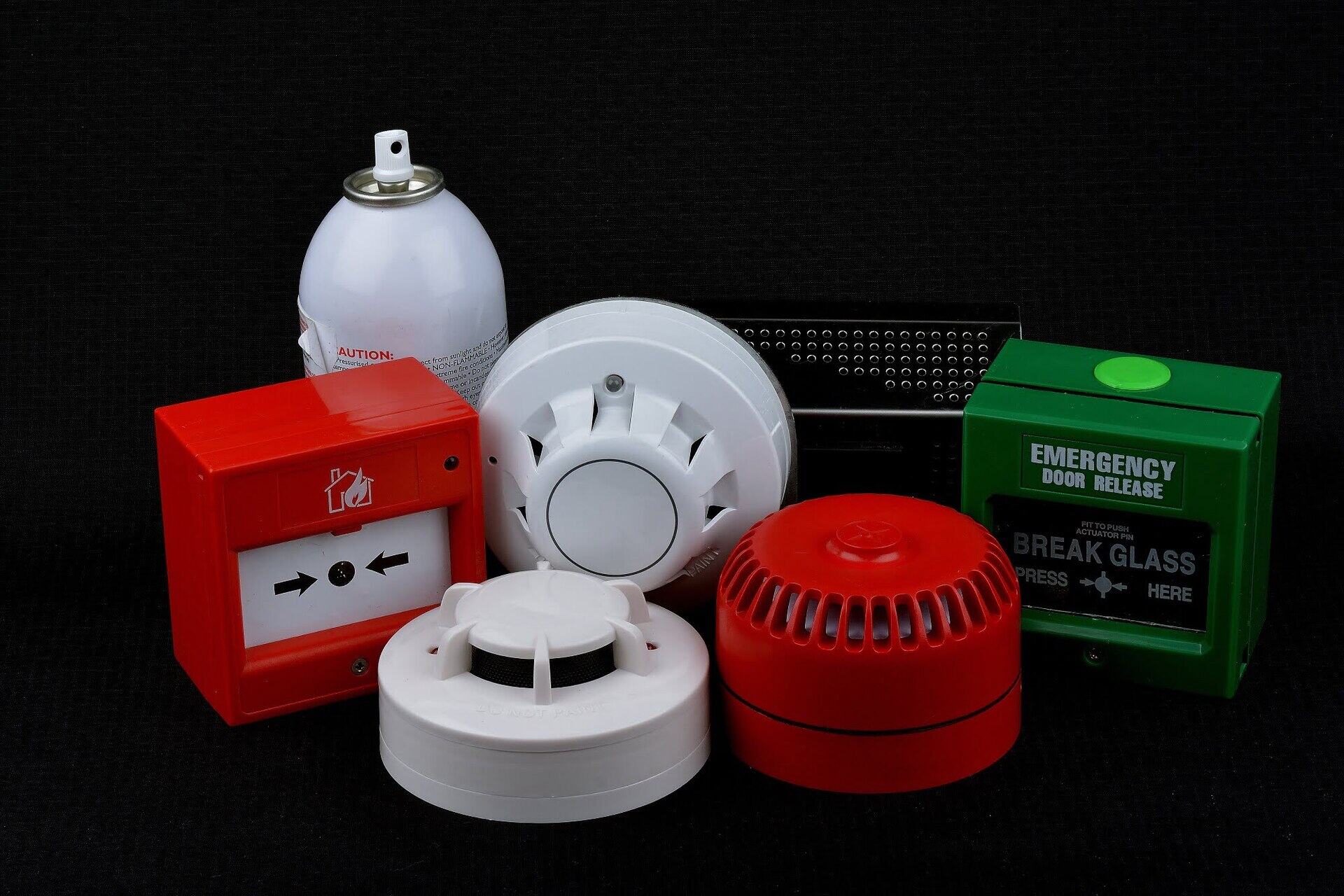Home>Home Security and Surveillance>When Are Fire Alarm Systems Required
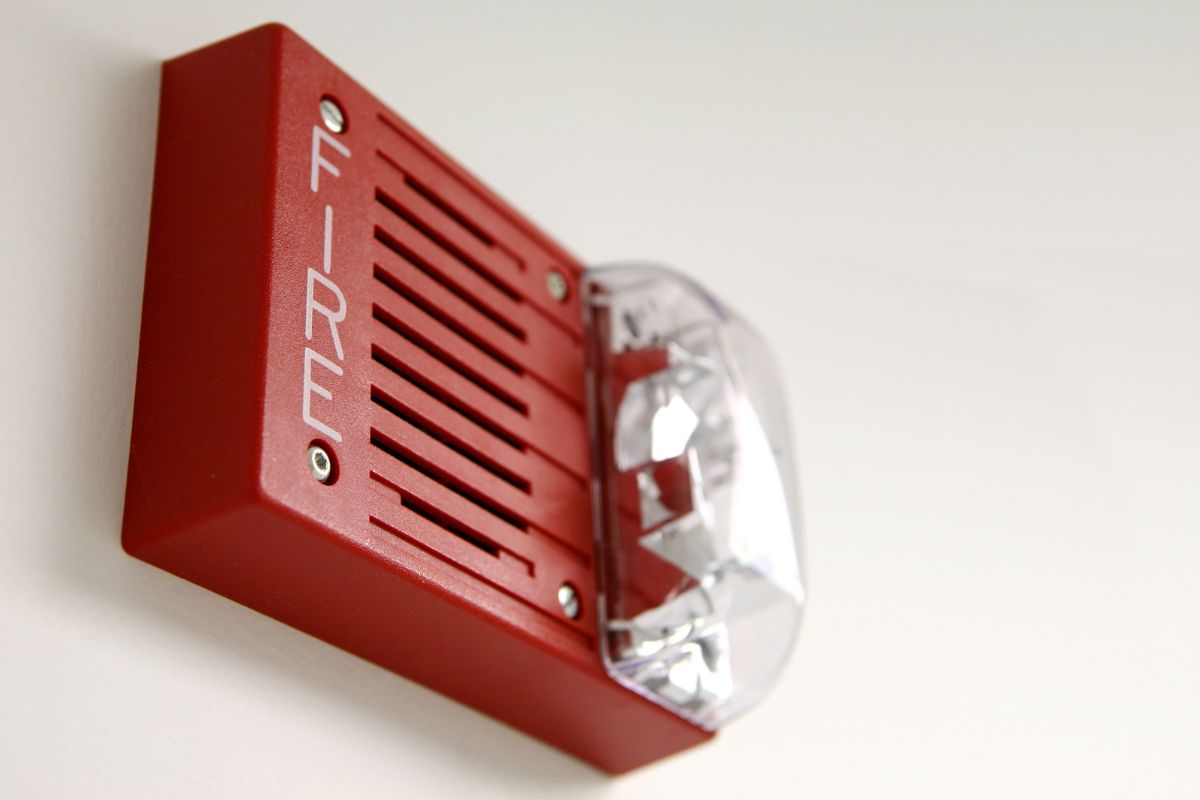

Home Security and Surveillance
When Are Fire Alarm Systems Required
Modified: October 20, 2024
Learn when fire alarm systems are required for home security and surveillance. Protect your home with the right fire safety measures.
(Many of the links in this article redirect to a specific reviewed product. Your purchase of these products through affiliate links helps to generate commission for Storables.com, at no extra cost. Learn more)
Introduction
Fire alarm systems play a crucial role in ensuring the safety and security of homes, businesses, and public spaces. These systems are designed to detect and alert occupants about the presence of fire, allowing for timely evacuation and minimizing potential damages. In many cases, fire alarm systems are not only required by law but also considered an essential component of any comprehensive security strategy.
In this article, we will explore the different requirements for fire alarm systems in various types of buildings, including residential, commercial, industrial, educational institutions, healthcare facilities, government buildings, recreational facilities, high-rise buildings, and historical buildings. Understanding these requirements is essential for ensuring compliance and promoting the well-being of occupants in different environments.
Before delving into the specific requirements, it is important to understand the basics of fire alarm systems. These systems consist of a combination of devices and components that work together to detect and respond to fires. The most common components include smoke detectors, heat detectors, fire alarms, fire sprinklers, and emergency notification devices. These devices are interconnected and monitored to ensure a quick and efficient response in the event of a fire.
The requirements for fire alarm systems can vary depending on the type of building, its occupancy, size, and specific regulations in the jurisdiction. Fire codes and standards, such as those set by the National Fire Protection Association (NFPA) and local authorities, provide guidelines on the installation, maintenance, and testing of fire alarm systems.
By complying with these requirements, building owners and occupants can enjoy peace of mind knowing that they have taken the necessary precautions to protect lives and property in the event of a fire. Let’s now explore the specific requirements for fire alarm systems in different types of buildings.
Key Takeaways:
- Fire alarm systems are crucial for the safety of buildings. They include smoke detectors, heat detectors, and emergency communication systems, ensuring early detection and efficient evacuation in case of emergencies.
- Different types of buildings, from homes to historical landmarks, have specific fire alarm system requirements. Compliance with these requirements is essential to prevent fires, protect lives, and preserve valuable assets.
Read more: Why Are Permits For Alarm Systems Required?
Definition of Fire Alarm Systems
To better understand the requirements for fire alarm systems in different buildings, it is important to have a clear understanding of what fire alarm systems are and how they function.
A fire alarm system is a network of interconnected devices and components designed to detect and alert occupants about the presence of fire. These systems are designed to provide an early warning, allowing for safe evacuation and immediate action to mitigate the effects of fire.
The primary components of a fire alarm system include smoke detectors, heat detectors, fire alarms, fire sprinklers, and emergency notification devices. Smoke detectors are designed to sense the presence of smoke particles, while heat detectors are designed to detect rapid increases in temperature. When these devices detect smoke or heat, they send signals to the fire alarm panel, which triggers the alarm and activates the emergency response procedures.
In addition to smoke detectors and heat detectors, fire alarm systems may also include other devices such as fire sprinklers, which are designed to extinguish or control the spread of fire by releasing water or other extinguishing agents. Emergency notification devices, such as strobe lights, sirens, and voice evacuation systems, are also commonly integrated into fire alarm systems to alert occupants and guide them towards safe exits.
Fire alarm systems are typically installed and maintained by trained professionals who ensure that the system is in proper working order at all times. Regular inspections, testing, and maintenance are necessary to ensure that the system functions correctly and meets the required standards.
Fire alarm systems can be both wired and wireless. Wired systems involve physical connections between the various components, whereas wireless systems utilize radio frequency technology to transmit signals between the devices. Both wired and wireless systems have their own advantages and can be tailored to suit the specific needs and layout of a building.
Overall, fire alarm systems are crucial for the early detection of fires and the safety of building occupants. By promptly alerting individuals and initiating emergency response procedures, these systems play a vital role in preventing injuries, minimizing damages, and potentially saving lives.
Fire Alarm System Requirements in Residential Buildings
Residential buildings, including single-family homes, multi-family dwellings, and apartment complexes, have specific fire alarm system requirements to ensure the safety of occupants and protect property.
In many jurisdictions, residential buildings are required to have smoke detectors installed on every level, including basements and attics. These smoke detectors should be interconnected so that if one is triggered, all alarms in the building will sound simultaneously. Additionally, smoke detectors must be installed in each sleeping area to provide early warning in case of a fire during the night.
It is essential to install smoke detectors in the immediate vicinity outside of each sleeping area as well. This helps to provide early warning and ensure that occupants can safely exit their rooms in the event of a fire.
In some cases, if a residential building has multiple floors, it may be required to have heat detectors installed in addition to smoke detectors. Heat detectors are useful in areas where smoke detectors may not be suitable due to high temperatures or excessive dust or moisture.
Along with smoke and heat detectors, residential buildings may also need to have carbon monoxide detectors installed. Carbon monoxide is a silent killer and is produced by appliances like furnaces, water heaters, and gas stoves. Carbon monoxide detectors are designed to detect the presence of this deadly gas and sound an alarm to alert occupants to evacuate.
It is important to maintain the fire alarm system in residential buildings regularly. This includes testing the smoke and heat detectors, replacing the batteries, and ensuring that all alarms are functioning properly. Regular maintenance helps to ensure that the fire alarm system is ready to respond effectively in case of an emergency.
In some cases, residential buildings may have additional fire safety requirements, such as fire sprinkler systems or fire-resistant construction materials. It is crucial to follow all local fire codes and regulations to ensure compliance and the highest level of safety for residents.
By adhering to the fire alarm system requirements for residential buildings, occupants can have peace of mind knowing that they are living in a safe environment with early warning systems to protect against potential fires.
Fire Alarm System Requirements in Commercial Buildings
Commercial buildings, including office buildings, retail stores, restaurants, and warehouses, have specific fire alarm system requirements to ensure the safety of employees, customers, and property. These requirements are essential in preventing fires and facilitating prompt evacuation in the event of an emergency.
In commercial buildings, the fire alarm system requirements are often more comprehensive compared to residential buildings due to larger occupancies and potential risks associated with various activities. The specific requirements may vary depending on the size, function, and occupancy classification of the building. It is important to consult local fire codes and regulations to determine the exact requirements for each commercial building.
One of the primary requirements in commercial buildings is the installation of a fire alarm control panel. This panel serves as the central hub for the fire alarm system and is responsible for monitoring and controlling all connected devices. The panel should be located in an easily accessible area and equipped with battery backup to ensure its operation during power outages.
Commercial buildings are typically required to have a combination of smoke detectors, heat detectors, and manual pull stations. Smoke detectors should be installed in areas where fires are most likely to occur, such as kitchens, storage rooms, and electrical rooms. Heat detectors are useful in areas where smoke detectors may not be suitable, such as mechanical rooms and areas with high temperatures or excessive dust or moisture.
In addition to detection devices, commercial buildings may also require the installation of sprinkler systems. Fire sprinklers are designed to suppress or extinguish fires by releasing water or other extinguishing agents. Sprinkler systems are typically connected to the fire alarm system, and activation of any sprinkler head will trigger the alarm.
Commercial buildings also often require the installation of manual pull stations. These stations allow occupants to manually activate the fire alarm system in case of emergency. Pull stations should be located in easily accessible areas, such as near exits and stairwells, and should be clearly labeled with appropriate signage.
Furthermore, commercial buildings may require additional fire safety measures, such as fire doors, fire-rated walls, and emergency lighting. These measures are important in containing fires, slowing down their spread, and providing clear pathways for safe evacuation.
Regular maintenance and testing of the fire alarm system are crucial in commercial buildings. This includes inspection of detection devices, testing of manual pull stations, and ensuring that the control panel is functioning properly. It is also important to train employees on the proper use of fire safety equipment and conduct regular fire drills to familiarize occupants with evacuation procedures.
By following the fire alarm system requirements for commercial buildings, businesses can ensure the safety of their employees, customers, and assets. Compliance with these requirements not only helps prevent fires but also enables prompt response and efficient evacuation in the event of an emergency.
Fire Alarm System Requirements in Industrial Buildings
Industrial buildings, such as manufacturing plants, warehouses, and chemical facilities, have specific fire alarm system requirements to address the unique hazards present in these environments. Given the nature of industrial operations and the potential for high-risk incidents, it is crucial to have a robust and reliable fire alarm system in place to ensure the safety of employees, protect property, and prevent catastrophic events.
The fire alarm system requirements in industrial buildings are often more stringent and complex than in other types of buildings due to the presence of various hazardous materials, heavy machinery, and specialized processes.
One of the fundamental requirements in industrial buildings is the installation of an advanced fire alarm system with sophisticated detection capabilities. This typically includes a combination of smoke detectors, heat detectors, flame detectors, and gas detectors, depending on the specific hazards of the facility. These detectors should be strategically placed to ensure optimal coverage and early detection of potential fires.
In addition to detection devices, industrial buildings may require the installation of specialized fire suppression systems. These systems are designed to suppress or extinguish fires using specific extinguishing agents suitable for the potential hazards in the facility. For example, a manufacturing plant dealing with flammable liquids may require a foam-based fire suppression system, while a facility handling volatile chemicals may require a gas-based system.
Industrial buildings often feature interconnected fire alarm systems that integrate with other control systems, such as emergency shutdown systems and ventilation systems. This integration ensures a coordinated response during a fire incident, allowing for timely evacuation and appropriate actions to mitigate the risk.
Industrial buildings may also have specific requirements for fire-resistant materials, fire-rated doors, and compartmentalization to prevent the spread of fire. Additionally, the layout and design of the facility must adhere to fire code regulations to ensure safe movement and evacuation during an emergency.
Regular maintenance, testing, and inspection of the fire alarm system are essential in industrial buildings. This includes verifying the functionality of all detection devices, ensuring the integrity of the suppression systems, and conducting comprehensive system testing. It is also crucial to provide ongoing training to employees on fire safety procedures, emergency response protocols, and proper use of firefighting equipment.
Industrial buildings must comply with all relevant fire codes, regulations, and industry standards. These requirements are in place to mitigate the risks associated with industrial operations, protect lives, and prevent major incidents and property damage.
By diligently following the fire alarm system requirements for industrial buildings, facility owners and operators can create a safe working environment and minimize the potential impact of fire-related emergencies.
Read more: Who Designs Fire Alarm Systems
Fire Alarm System Requirements in Educational Institutions
Educational institutions, including schools, colleges, and universities, have specific fire alarm system requirements to ensure the safety of students, teachers, staff, and visitors. These requirements are intended to provide early detection of fires, prompt evacuation, and effective response in case of emergencies.
Fire alarm systems in educational institutions should be comprehensive and tailored to the size and layout of the facility. The specific requirements may vary depending on local fire codes and regulations, as well as the age and occupancy classification of the buildings.
One of the primary requirements is the installation of smoke detectors throughout the buildings. Smoke detectors should be strategically placed in classrooms, hallways, common areas, and other high-risk areas to ensure efficient detection of smoke and early warning of a potential fire. These detectors should be interconnected so that if one alarm is triggered, all alarms in the building will sound, allowing for quick evacuation.
For larger educational institutions or buildings with multiple floors, heat detectors may also be required. Heat detectors are useful in areas where smoke detectors would be impractical, such as kitchens, mechanical rooms, and areas with high humidity or dust.
Emergency communication systems are another important requirement in educational institutions. These systems, including loudspeakers and intercoms, enable the dissemination of emergency announcements and instructions to occupants during a fire or other emergencies. Clear and audible communication is crucial for guiding students, teachers, and staff to safe evacuation routes.
Additional fire alarm system requirements may include the installation of manual pull stations, fire extinguishers, and emergency lighting. Manual pull stations should be easily accessible and clearly marked with appropriate signage. Fire extinguishers should be strategically placed throughout the building, and emergency lighting should be installed to ensure visibility during power outages.
Regular maintenance and testing of the fire alarm system are essential in educational institutions. This includes routine inspections of smoke detectors, heat detectors, pull stations, and other system components to ensure proper functioning. It is also important to conduct fire drills and provide fire safety training to students and staff to familiarize them with evacuation procedures.
Educational institutions must comply with all local fire codes and regulations to ensure the highest level of safety for occupants. These requirements are designed to prevent fires, minimize the risk of injuries, and provide a secure environment for learning and teaching.
By adhering to the fire alarm system requirements for educational institutions, administrators and staff can ensure the safety and well-being of everyone within the premises, creating a conducive environment for education.
Fire alarm systems are required in most buildings to alert occupants in case of a fire. They are typically mandated by building codes and regulations to ensure the safety of everyone inside. Always check local regulations to determine when a fire alarm system is required for your building.
Fire Alarm System Requirements in Healthcare Facilities
Fire alarm systems in healthcare facilities, such as hospitals, clinics, and nursing homes, are critical for safeguarding patients, staff, and visitors. These facilities have unique requirements due to the vulnerable population they serve and the complex operational nature of healthcare settings.
The fire alarm system requirements in healthcare facilities aim to provide early detection of fires, initiate timely evacuation plans, and ensure the safe and effective response in case of emergencies.
One of the primary requirements in healthcare facilities is the installation of a comprehensive fire alarm system incorporating advanced detection technologies. Smoke detectors are typically installed throughout the facility, including patient rooms, hallways, treatment areas, and common spaces, to provide early warning of smoke and fire. These detectors should be interconnected so that if one alarm is triggered, all alarms in the building will sound, alerting occupants to evacuate.
Some healthcare facilities, especially those with high-risk areas such as operating rooms and laboratories, may also require the installation of heat detectors. Heat detectors are useful in areas where smoke detectors may not provide adequate detection due to unique environmental conditions or the presence of certain medical equipment.
Emergency communication systems are a crucial component of fire alarm systems in healthcare facilities. These systems involve integrating fire alarms with a voice communication system to provide clear and concise instructions to occupants during an emergency. This ensures that patients, staff, and visitors can safely evacuate or shelter in place as necessary.
Healthcare facilities may also have additional fire safety requirements such as the installation of fire doors, fire-resistant walls, and fire-resistant construction materials to contain fires and prevent their spread. Fire-resistant doors and walls create compartments that help to limit the spread of fire and smoke, providing additional time for evacuation.
Regular testing, maintenance, and inspection of the fire alarm system are crucial in healthcare facilities to ensure their proper functioning. Healthcare facilities typically have strict protocols for inspection, testing, and maintenance to comply with accreditation requirements and ensure the safety of patients and staff.
Staff members in healthcare facilities should receive comprehensive fire safety training, including fire response procedures, evacuation plans, and the proper use of firefighting equipment. Regular fire drills should be conducted to train staff and familiarize them with emergency protocols.
Compliance with local fire codes, regulations, and industry standards is essential for healthcare facilities to ensure the highest level of safety for patients, staff, and visitors. These requirements help to prevent fires, mitigate risks, and provide a secure environment for quality healthcare delivery.
By following the fire alarm system requirements specific to healthcare facilities, administrators and staff can create a safe and secure environment for patient care, ensuring the well-being of all within the facility.
Fire Alarm System Requirements in Government Buildings
Government buildings, including city halls, courthouses, and administrative offices, have specific fire alarm system requirements to ensure the safety of employees, visitors, and protect important government documents and assets. These requirements aim to provide early detection of fires, prompt evacuation, and effective response to emergencies.
The fire alarm system requirements in government buildings vary depending on the size, occupancy, and specific regulations of the facility. Compliance with local fire codes and regulations is essential in order to meet the required safety standards.
One of the primary requirements in government buildings is the installation of a reliable and comprehensive fire alarm system. This typically includes the installation of interconnected smoke detectors throughout the building, including offices, corridors, meeting rooms, and other areas where fires are most likely to occur. The interconnected nature of the smoke detectors ensures that if one alarm is triggered, all alarms in the building will sound, providing early warning to all occupants.
Government buildings may also require the installation of heat detectors, especially in areas where smoke detectors may not be suitable due to environmental factors or the presence of specific equipment. Heat detectors are designed to detect rapid increases in temperature and can provide an additional layer of fire detection in high-risk areas.
Emergency communication systems are another crucial aspect of fire alarm system requirements in government buildings. These systems include loudspeakers, intercoms, and emergency notification devices that enable the dissemination of emergency announcements and instructions to occupants during a fire or other emergencies. Clear communication is vital for guiding occupants to safe evacuation routes and ensuring effective emergency response.
Government buildings may also have additional fire safety requirements such as the installation of fire extinguishers, emergency lighting, and clearly marked exit signs. These measures support safe evacuation and provide necessary tools in case of small fires that can be contained before they escalate.
Regular maintenance and testing of the fire alarm system is essential in government buildings to ensure their proper functioning. This includes routine inspections of smoke detectors, heat detectors, emergency lighting, and other system components. It is crucial to conduct regular fire drills and provide fire safety training to employees to familiarize them with evacuation procedures and emergency response protocols.
Government buildings must comply with local fire codes, regulations, and industry standards to ensure the safety of occupants and protect important government assets. Compliance with these requirements helps to prevent fires, minimize the risk of injuries, and provide a secure environment for conducting government operations.
By adhering to the fire alarm system requirements specific to government buildings, administrators can promote the safety and well-being of employees and visitors, while also safeguarding critical government functions.
Fire Alarm System Requirements in Recreational Facilities
Recreational facilities, such as gyms, sports stadiums, and entertainment venues, have specific fire alarm system requirements to ensure the safety of patrons, staff, and performers. These requirements are designed to provide early detection of fires, prompt evacuation, and effective response in case of emergencies, while also considering the unique characteristics and activities within these facilities.
The fire alarm system requirements in recreational facilities may vary depending on the size, occupancy, and specific regulations of the facility. It is crucial to comply with local fire codes and regulations to ensure the safety of all occupants and visitors.
One of the primary requirements in recreational facilities is the installation of a reliable and comprehensive fire alarm system. This typically includes the installation of interconnected smoke detectors throughout the facility, including public areas, dressing rooms, concession stands, and other relevant locations. The interconnected nature of the smoke detectors ensures that if one alarm is triggered, all alarms in the building will sound, providing early warning to all occupants.
In areas where smoke detectors may not be suitable due to environmental factors or the presence of specific equipment, heat detectors may be required. Heat detectors are designed to detect rapid increases in temperature and can provide an additional layer of fire detection in high-risk areas, such as kitchens or mechanical rooms.
Emergency communication systems are also essential in recreational facilities. These systems include loudspeakers, intercoms, and emergency notification devices that enable the dissemination of clear and timely emergency announcements and instructions to patrons and staff during a fire or other emergencies. Quick and effective communication is crucial in guiding people to safe evacuation routes and ensuring a prompt response to emergencies.
Recreational facilities may have additional fire safety requirements, such as the installation of fire extinguishers, emergency lighting, and clearly marked exit signs. These measures support safe evacuation and provide necessary tools for fire suppression before emergency response teams arrive.
Regular maintenance and testing of the fire alarm system are essential in recreational facilities to ensure their proper functioning. Routine inspections of smoke detectors, heat detectors, emergency lighting, and other system components help identify and address any issues promptly. Conducting regular fire drills and providing fire safety training to staff and volunteers also contribute to preparedness and familiarization with evacuation procedures and emergency response protocols.
Recreational facilities must comply with local fire codes, regulations, and industry standards to ensure the safety of all patrons, staff, and performers. Compliance with these requirements helps prevent fires, minimize the risk of injuries, and maintain a safe environment for recreational activities and events.
By adhering to the fire alarm system requirements specific to recreational facilities, facility operators can provide a secure and enjoyable experience for all visitors while prioritizing their safety and well-being.
Fire Alarm System Requirements in High-Rise Buildings
High-rise buildings, characterized by their significant height and multiple floors, have unique fire alarm system requirements to ensure the safety of occupants and facilitate efficient evacuation. Due to the complex nature of high-rise buildings and the potential challenges in emergency response, stringent fire alarm system requirements are in place to address these specific needs.
One of the primary requirements in high-rise buildings is the installation of a comprehensive and sophisticated fire alarm system. This typically includes the installation of smoke detectors throughout the building, including common areas, hallways, stairwells, and individual units. The detectors should be interconnected to ensure that if one alarm is triggered, all alarms in the building will sound, providing early warning and allowing for prompt evacuation.
In addition to smoke detectors, heat detectors may also be required in high-rise buildings. Heat detectors can be installed in areas where smoke detectors may not be suitable due to environmental factors or the presence of specific equipment. These detectors detect rapid increases in temperature and provide an additional layer of fire detection, especially in areas such as mechanical rooms or utility areas.
Emergency communication systems are crucial in high-rise buildings to ensure effective communication during emergencies. This includes integrating fire alarms with voice communication systems, such as loudspeakers and intercoms, to provide clear and concise emergency instructions to occupants. Additionally, high-rise buildings often require a public address system to make emergency announcements and guide occupants during evacuation.
High-rise buildings commonly have additional fire safety requirements, such as the installation of fire-rated doors, fire-resistant walls, and fire suppression systems. Fire-resistant materials and compartmentalization help to contain fires in specific areas, slow down their spread, and provide additional time for evacuation. Fire suppression systems, such as automatic sprinklers, can help control or extinguish fires before they escalate.
Regular maintenance and testing of the fire alarm system are crucial in high-rise buildings. This includes routine inspections of smoke and heat detectors, testing of the emergency communication system, and conducting comprehensive system checks. It is also vital to conduct regular fire drills, evacuation drills, and provide fire safety training to occupants to familiarize them with emergency procedures and evacuation routes.
High-rise buildings must comply with local fire codes, regulations, and industry standards to ensure the safety of occupants and mitigate the risks associated with fires. Compliance with these requirements helps prevent fires, facilitates efficient evacuation, and ensures a safe living and working environment
By adhering to the fire alarm system requirements specific to high-rise buildings, owners and managers can enhance the safety and well-being of occupants and minimize the potential impact of fire-related emergencies.
Fire Alarm System Requirements in Historical Buildings
Historical buildings, treasures of our past and cultural heritage, require special consideration when it comes to fire alarm system requirements. These unique structures often pose challenges due to their age, architectural significance, and preservation requirements. Balancing the need for fire safety while preserving the historical integrity of these buildings is of utmost importance.
Fire alarm system requirements in historical buildings involve a thoughtful approach that ensures the safety of occupants and the preservation of these architectural treasures.
One essential requirement is the installation of a discreet fire alarm system that blends seamlessly with the historical aesthetics of the building. Diverse detection methods, such as smoke detectors and heat detectors, should be employed strategically to provide early detection of fires without compromising the historic fabric of the structure. Careful consideration should be given to the placement of these detectors to minimize visual impact and preserve the building’s original features.
Historical buildings may require the installation of specialized fire suppression systems that are designed to protect the structure and its contents without inflicting damage. Waterless fire suppression systems, such as gas or foam-based systems, may be utilized to control or extinguish fires while minimizing the risk of water damage to precious artifacts or fragile building materials.
Emergency communication systems within historical buildings need to be discreet yet effective. Voice evacuation systems may be installed, with speakers strategically placed to provide clear and concise instructions to occupants during emergencies, ensuring their safe evacuation.
It is crucial to adopt a preservation-minded approach to fire safety in historical buildings. This may involve the use of fire-resistant materials, the installation of fire doors in critical areas, and the implementation of fire compartmentalization strategies. These measures help contain fires, slow down their progression, and protect irreplaceable historical elements.
Regular maintenance and testing of the fire alarm system are crucial within historical buildings. Inspection and testing should be carried out by professionals with expertise in preserving historical structures to ensure that fire safety measures align with preservation requirements. Comprehensive fire drills and training should be conducted to educate occupants on safety protocols and evacuation procedures specifically designed for historical buildings.
It is important to work closely with preservation authorities and fire safety experts when implementing fire alarm system requirements in historical buildings. Balancing the need for fire safety with the preservation of historical integrity is paramount to safeguarding these valuable structures for future generations.
By adhering to fire alarm system requirements that are tailored to the unique characteristics of historical buildings, we can ensure the protection of these cultural assets and the safety of occupants without compromising their historical significance.
Conclusion
Fire alarm systems are essential for ensuring the safety and security of various types of buildings, from residential to commercial, industrial to educational, healthcare to government, recreational to high-rise, and even historical buildings. Adhering to specific fire alarm system requirements is crucial in preventing fires, providing early detection, and facilitating prompt evacuation in case of emergencies.
These requirements encompass a range of components, including smoke detectors, heat detectors, fire alarms, fire sprinklers, and emergency communication systems. The installation, maintenance, and testing of these systems are governed by local fire codes, regulations, and industry standards to ensure the highest level of safety for occupants.
In residential buildings, smoke detectors installed on every level and within sleeping areas are vital for early fire detection. Commercial buildings require comprehensive systems with interconnected detectors, manual pull stations, and emergency communication systems to protect employees and customers. Industrial buildings have specialized requirements due to the presence of hazardous materials, requiring advanced detection technologies and suppression systems.
Educational institutions need reliable systems for student and staff safety, combined with emergency communication systems to guide evacuation. Healthcare facilities have unique requirements considering the vulnerable population they serve, including interconnected smoke detectors, specific evacuation plans, and fire-resistant materials. Government buildings require comprehensive systems with emphasis on emergency communication and compliance with local fire codes.
Recreational facilities must prioritize fire safety for patrons and staff, ensuring proper detection and emergency communication. High-rise buildings have more complex systems, including interconnected detectors, emergency communication, fire-resistant construction, and regular maintenance. Historical buildings require a delicate balance between fire safety and preservation, employing discreet systems and specialized fire suppression.
In conclusion, adherence to fire alarm system requirements is crucial for the safety and well-being of occupants in various types of buildings. By following these requirements, we can prevent fires, provide early detection, and facilitate efficient evacuation, ultimately saving lives and protecting valuable assets. Building owners, managers, and occupants should work in collaboration with fire safety professionals to ensure compliance and create a secure environment in which people can live, work, learn, and engage in recreational activities.
Frequently Asked Questions about When Are Fire Alarm Systems Required
Was this page helpful?
At Storables.com, we guarantee accurate and reliable information. Our content, validated by Expert Board Contributors, is crafted following stringent Editorial Policies. We're committed to providing you with well-researched, expert-backed insights for all your informational needs.

